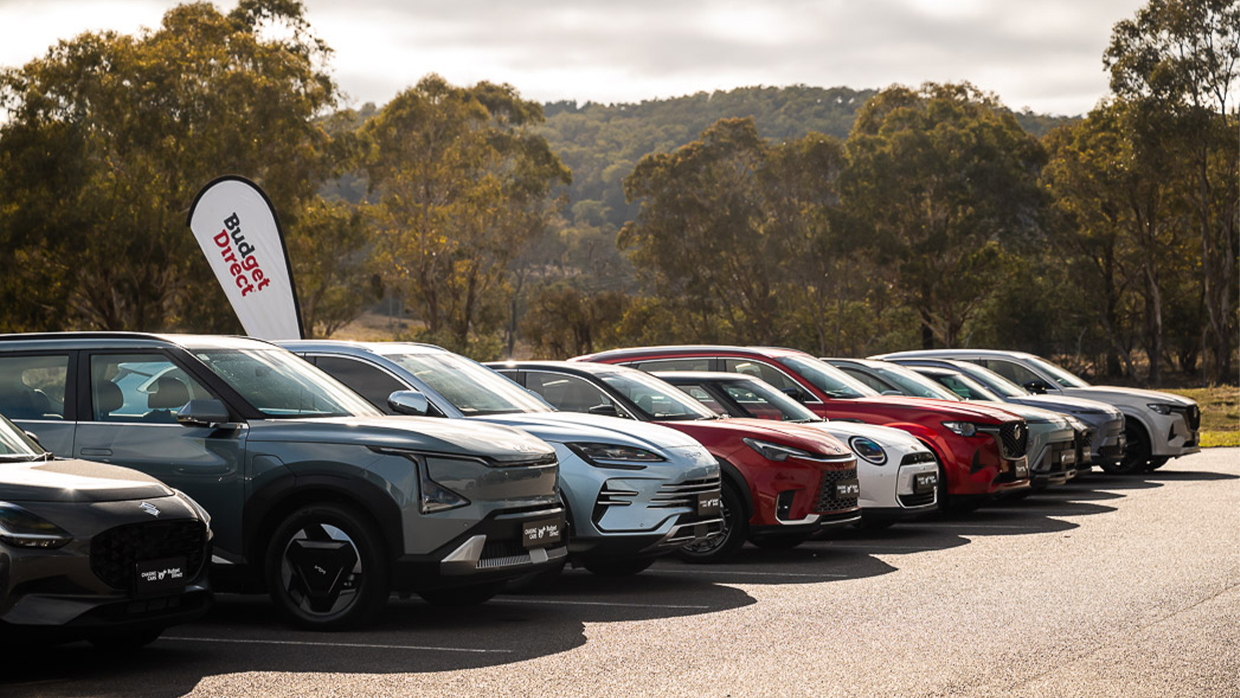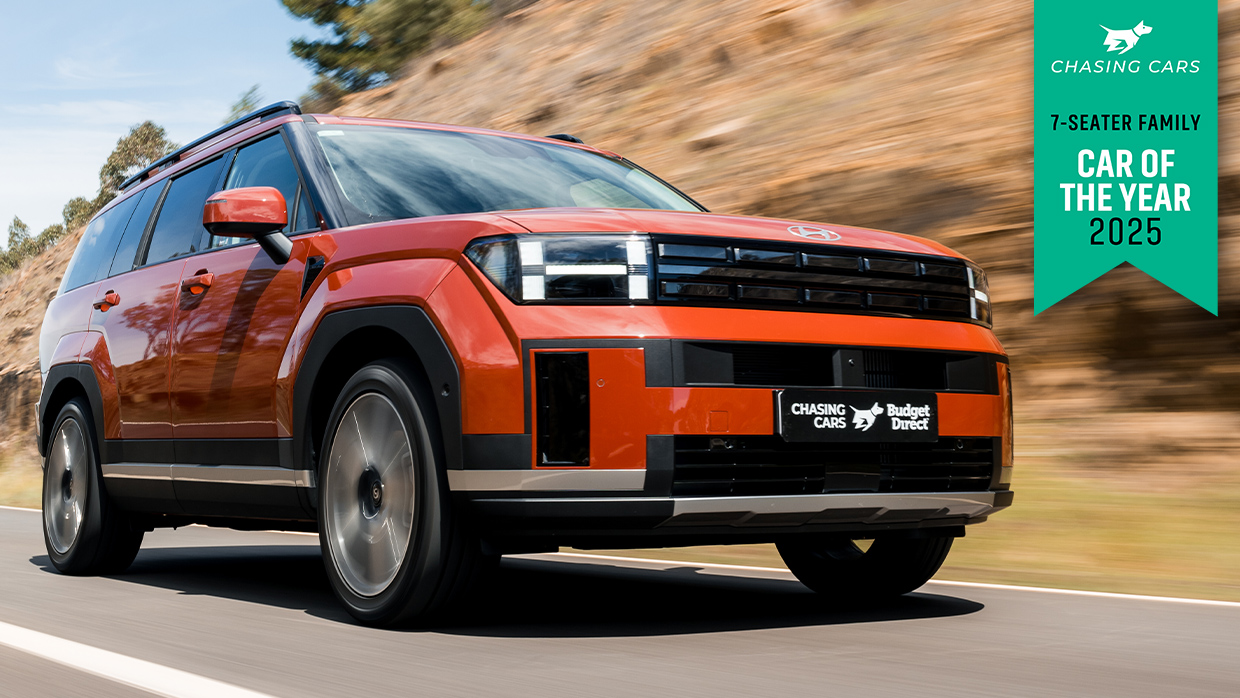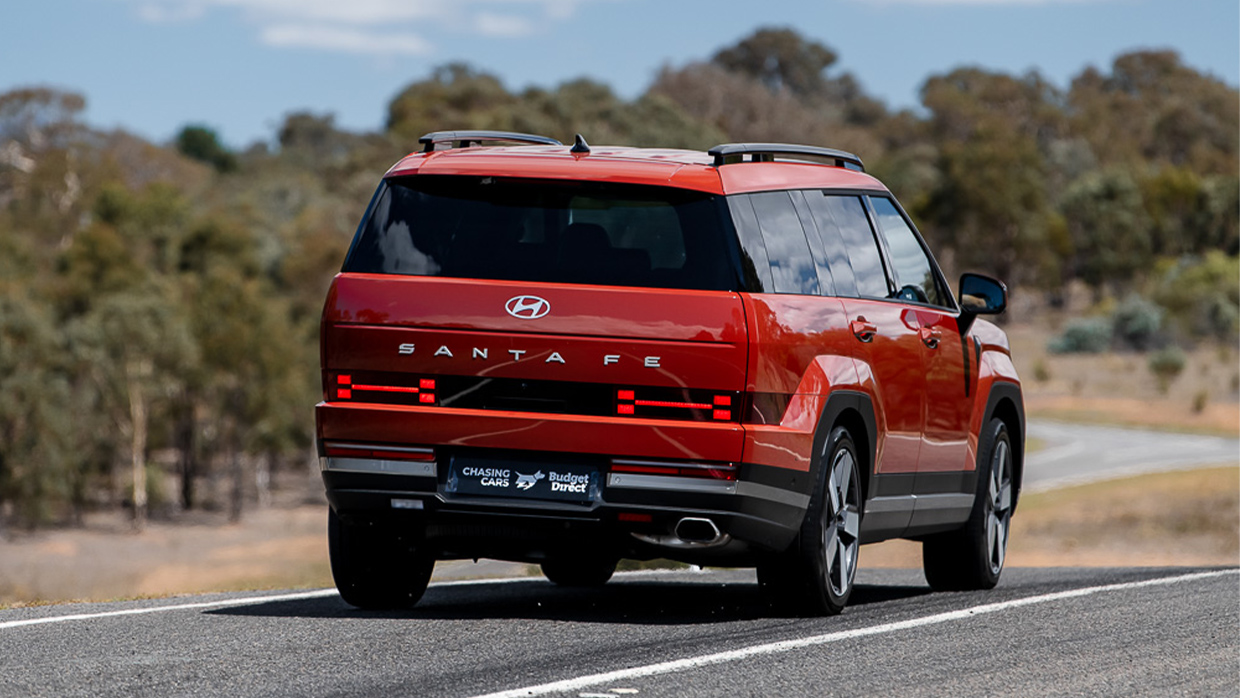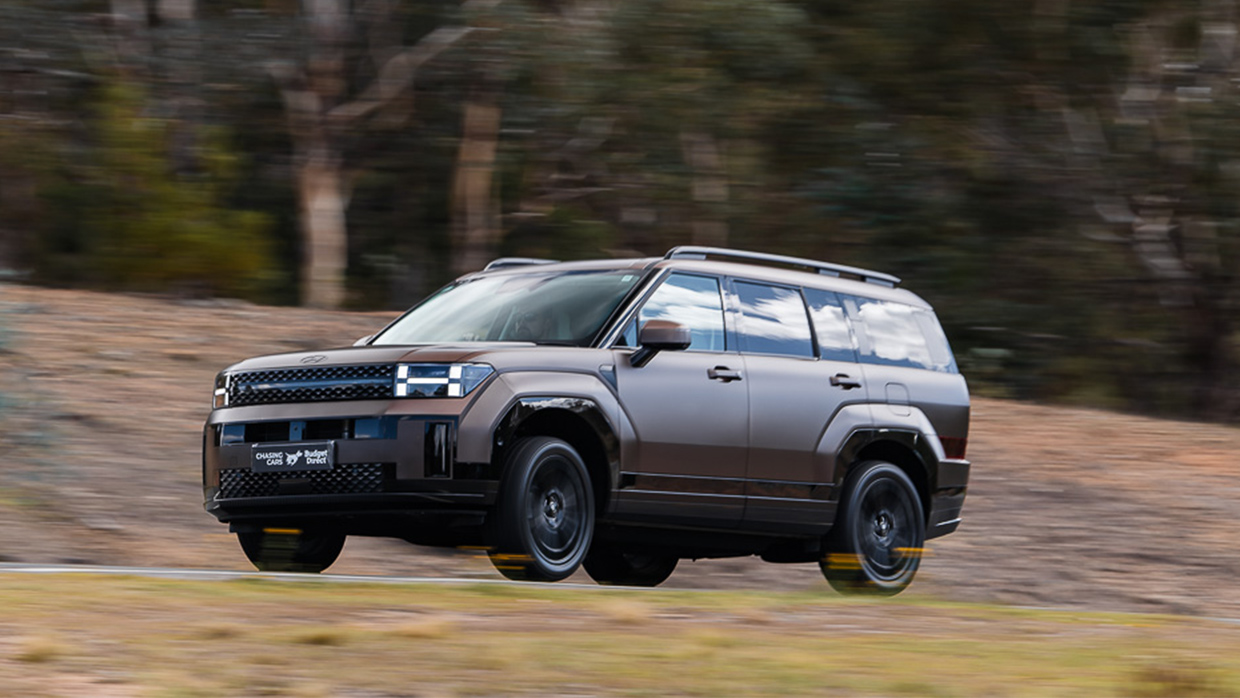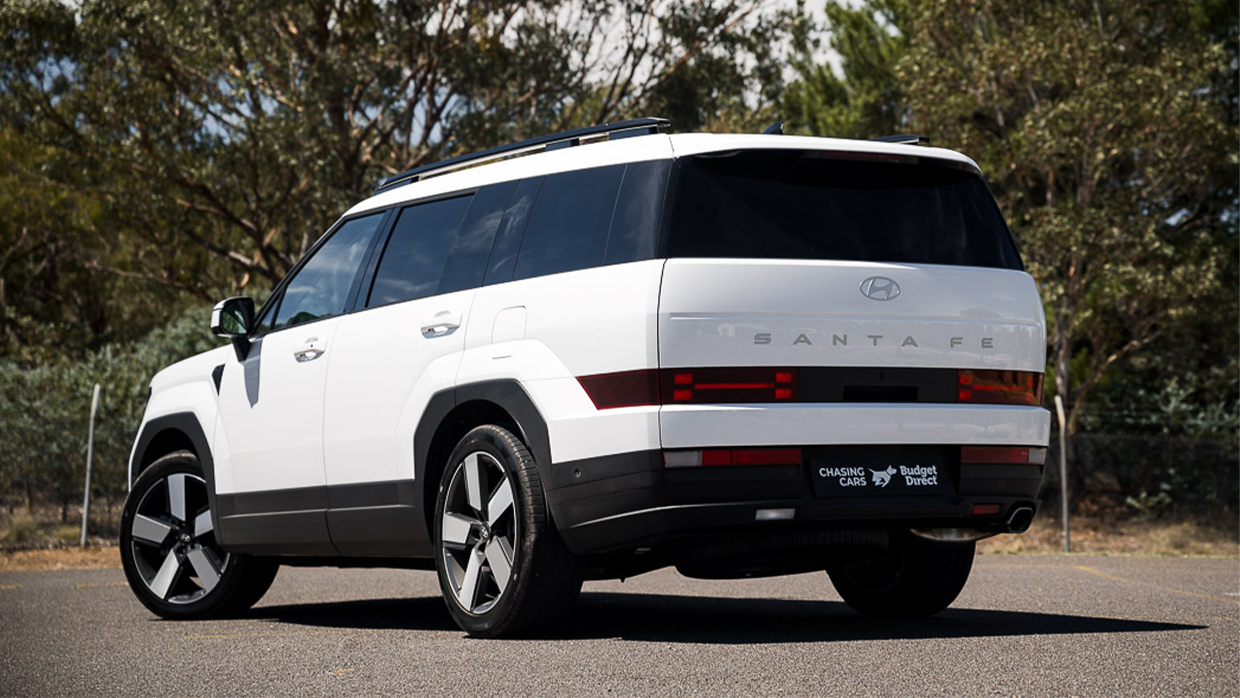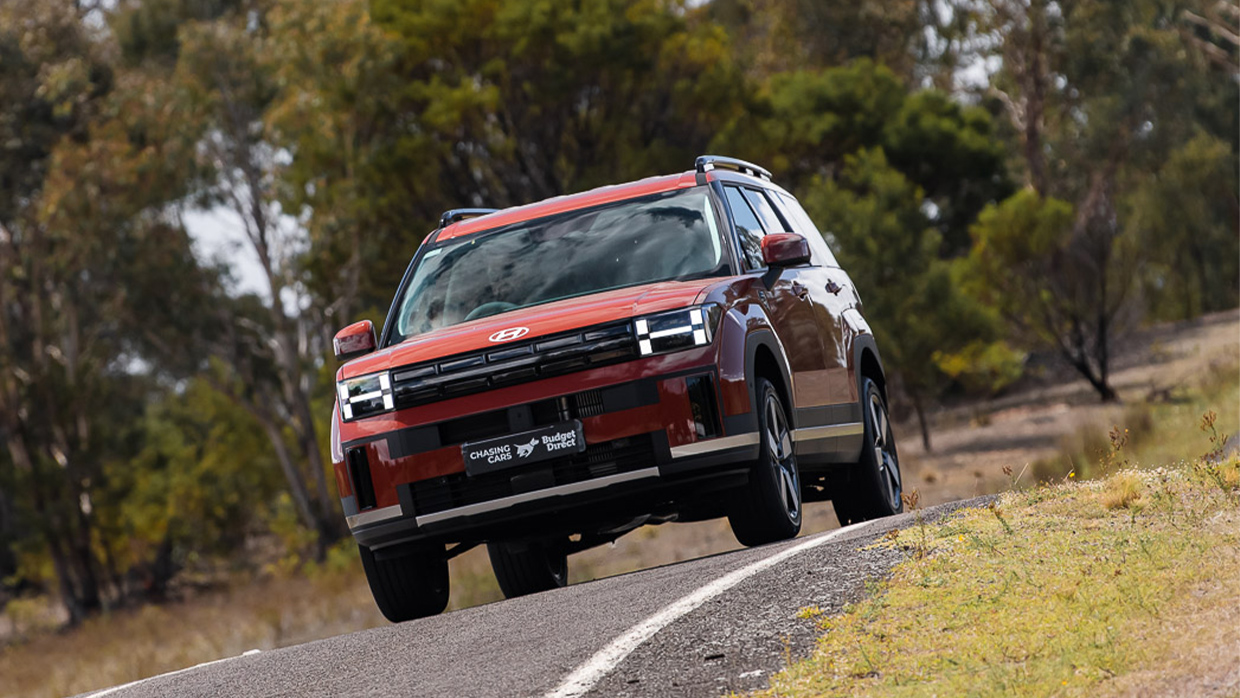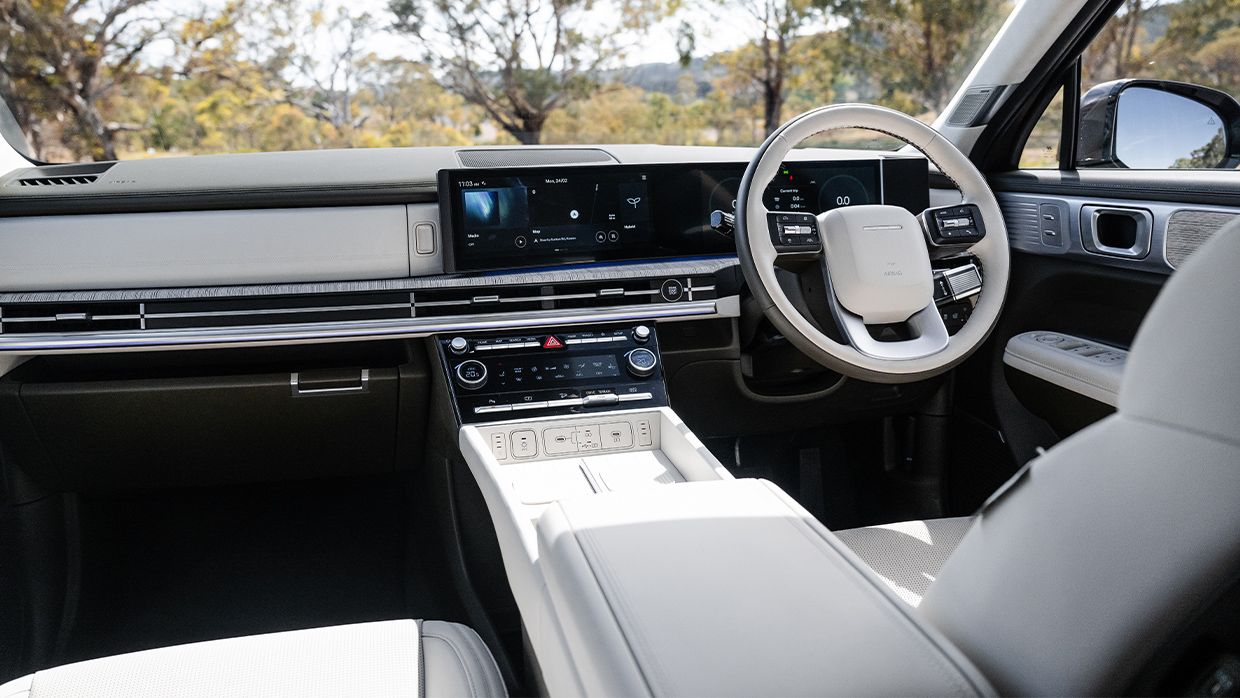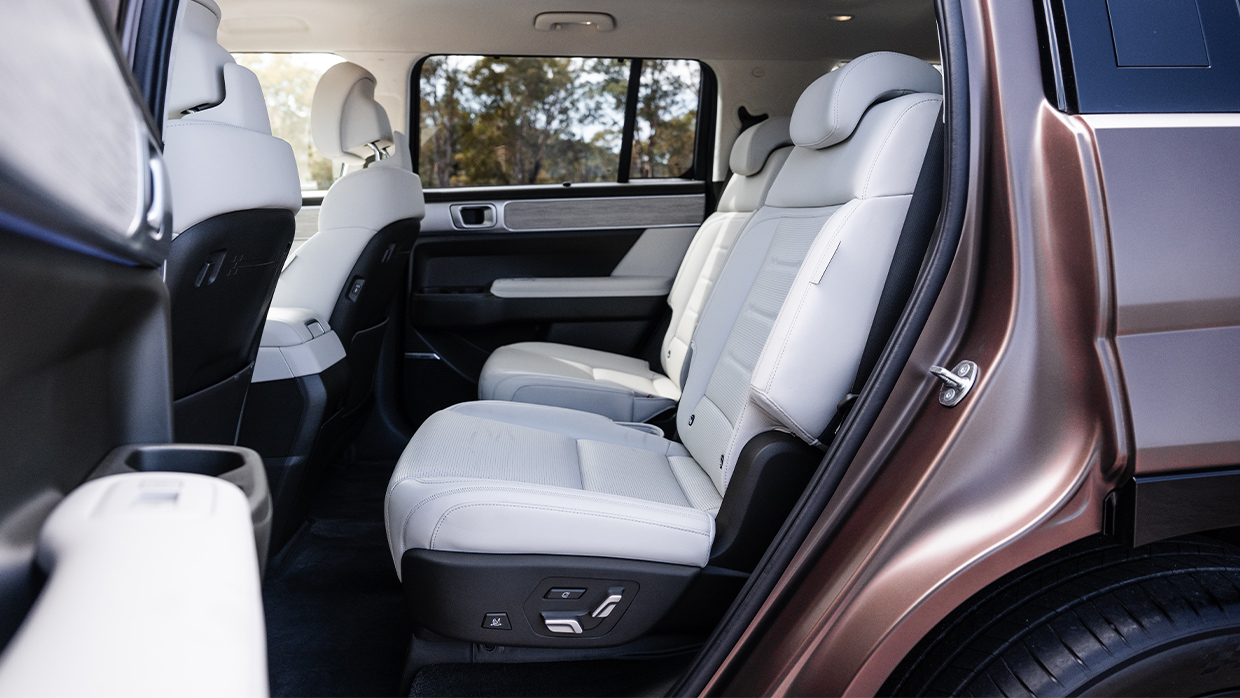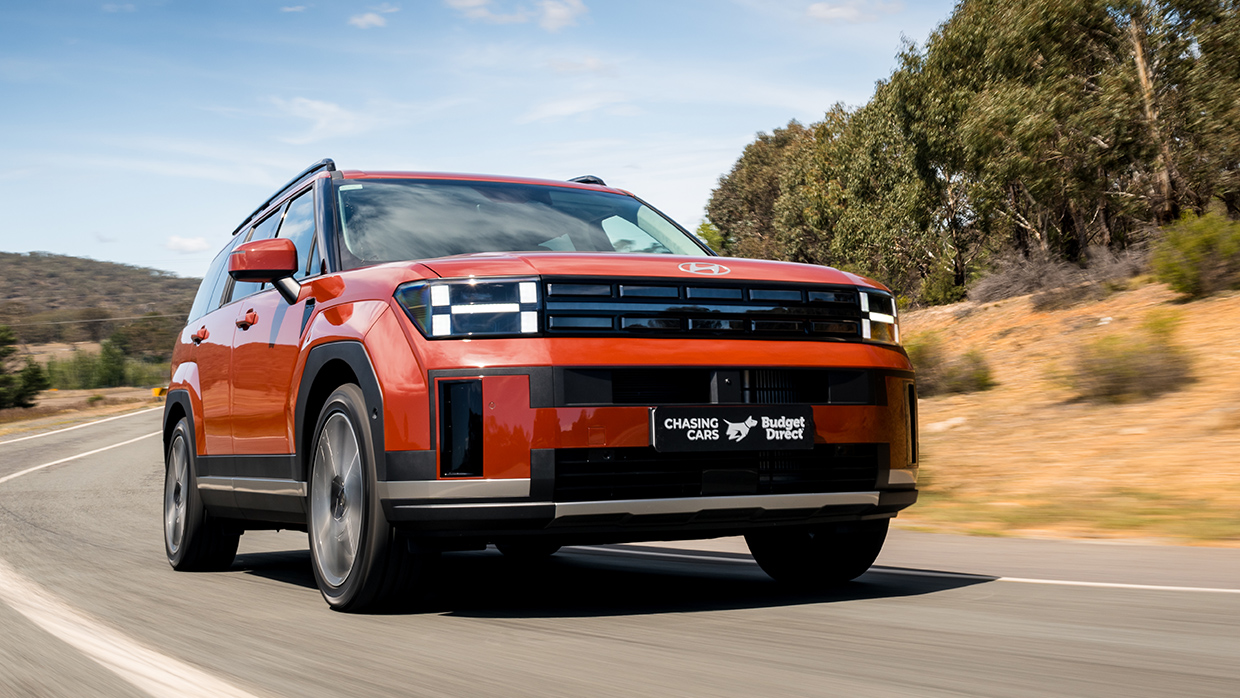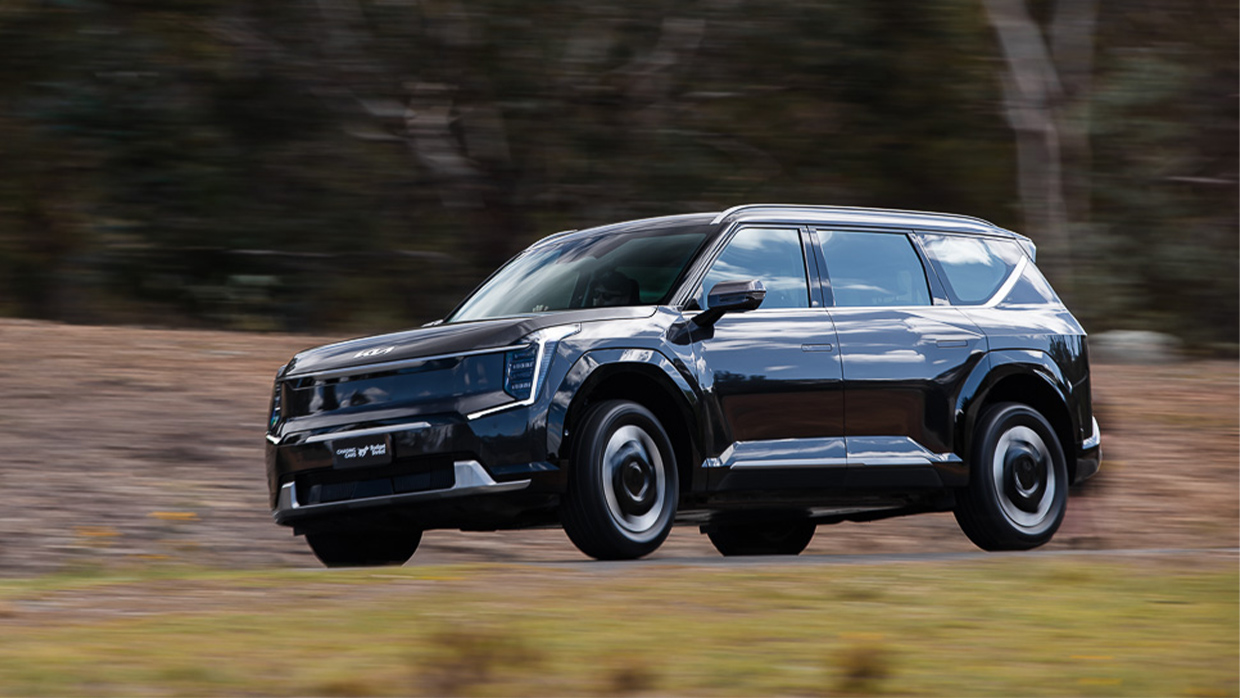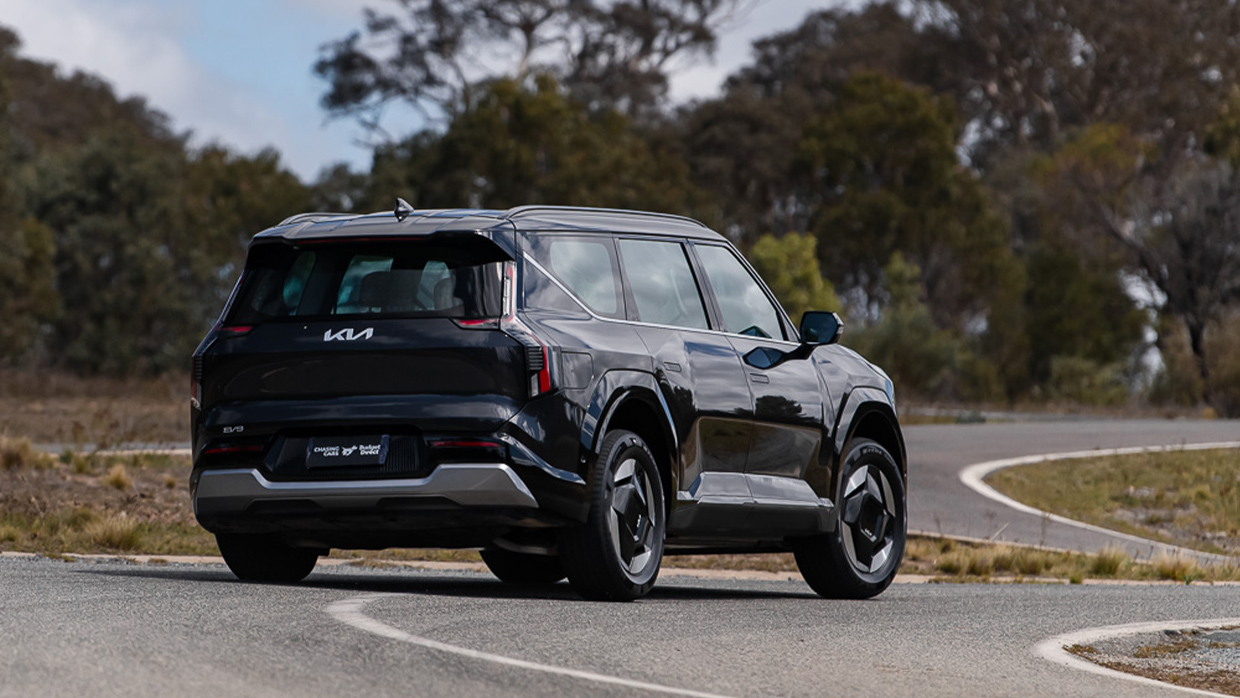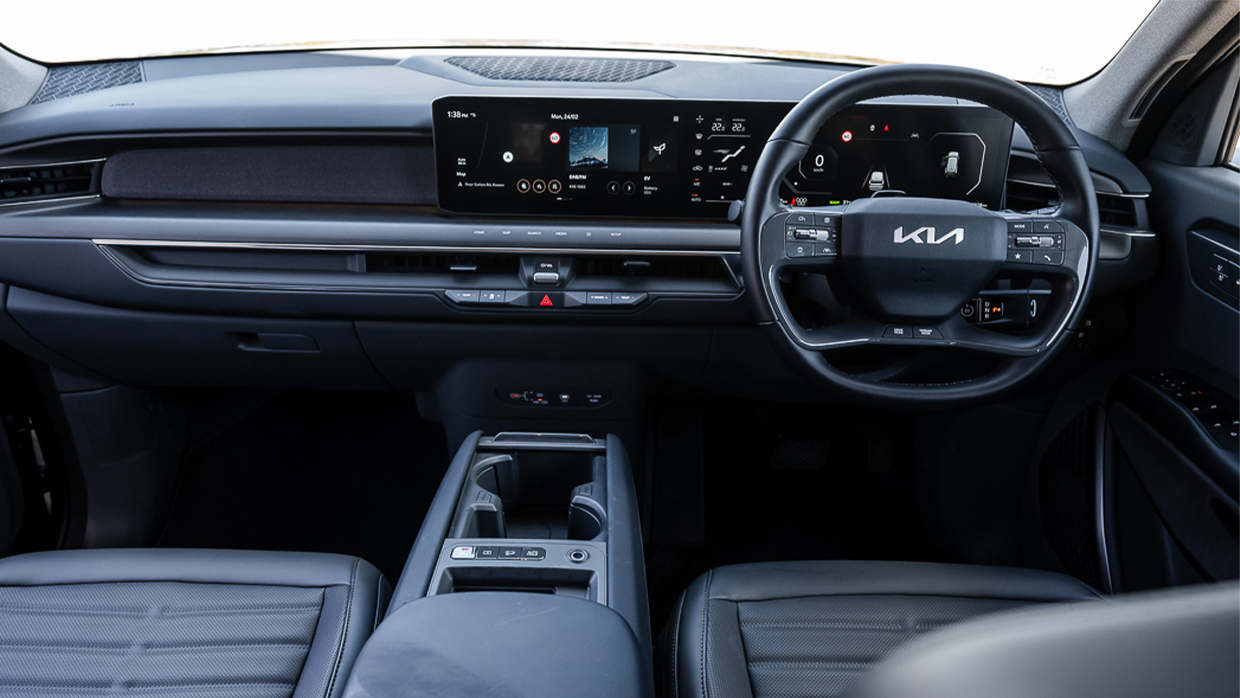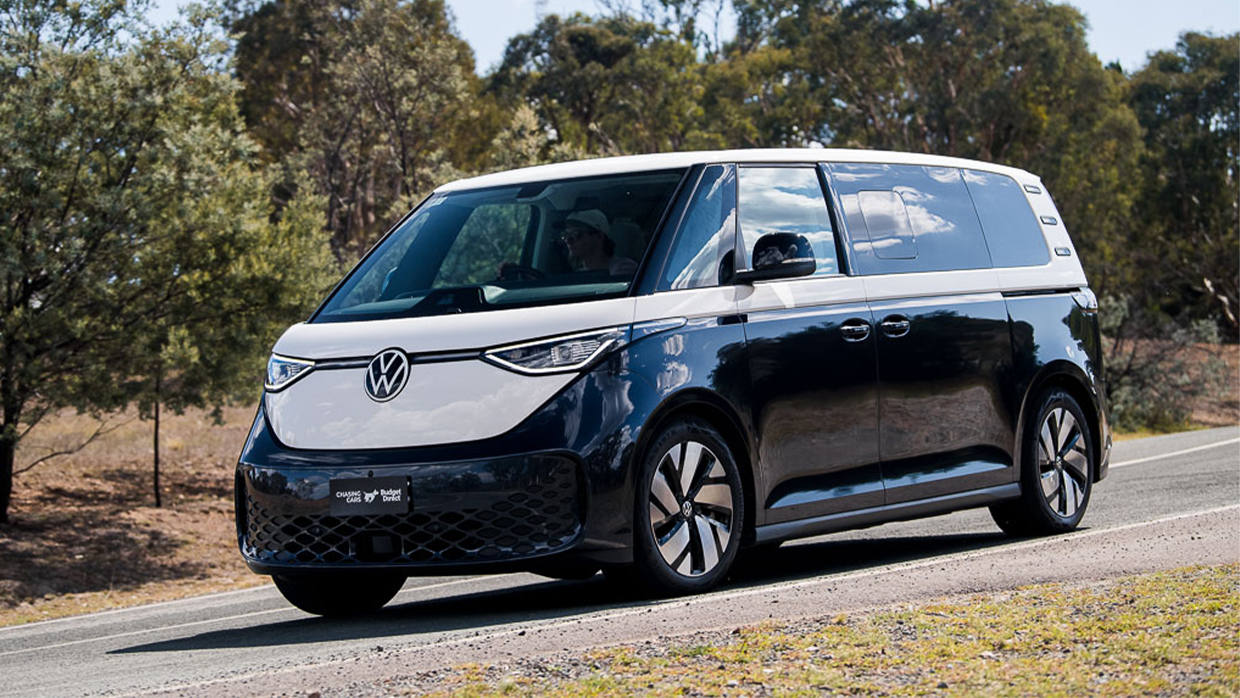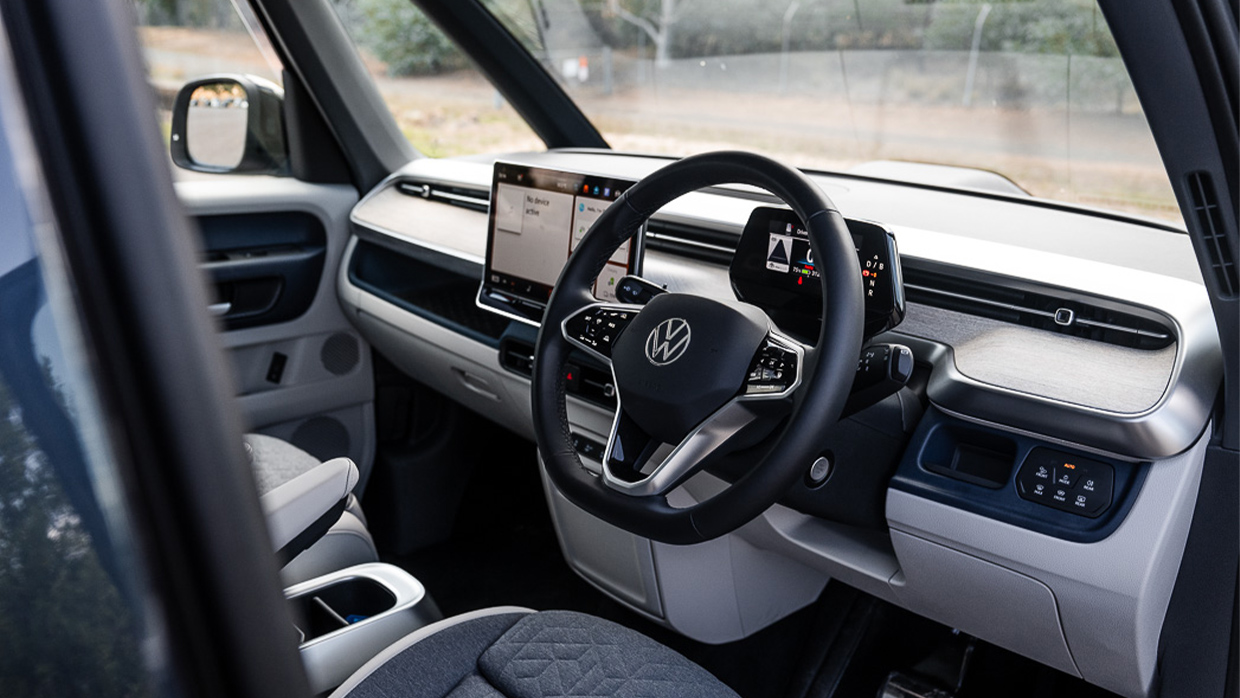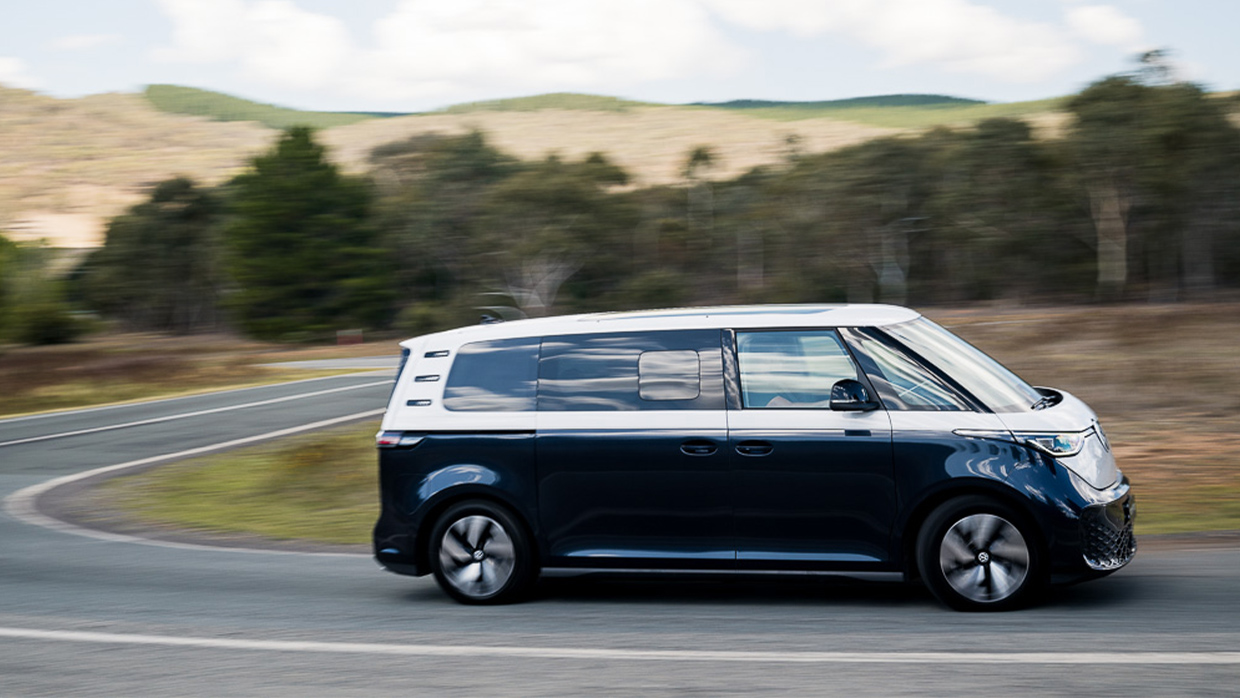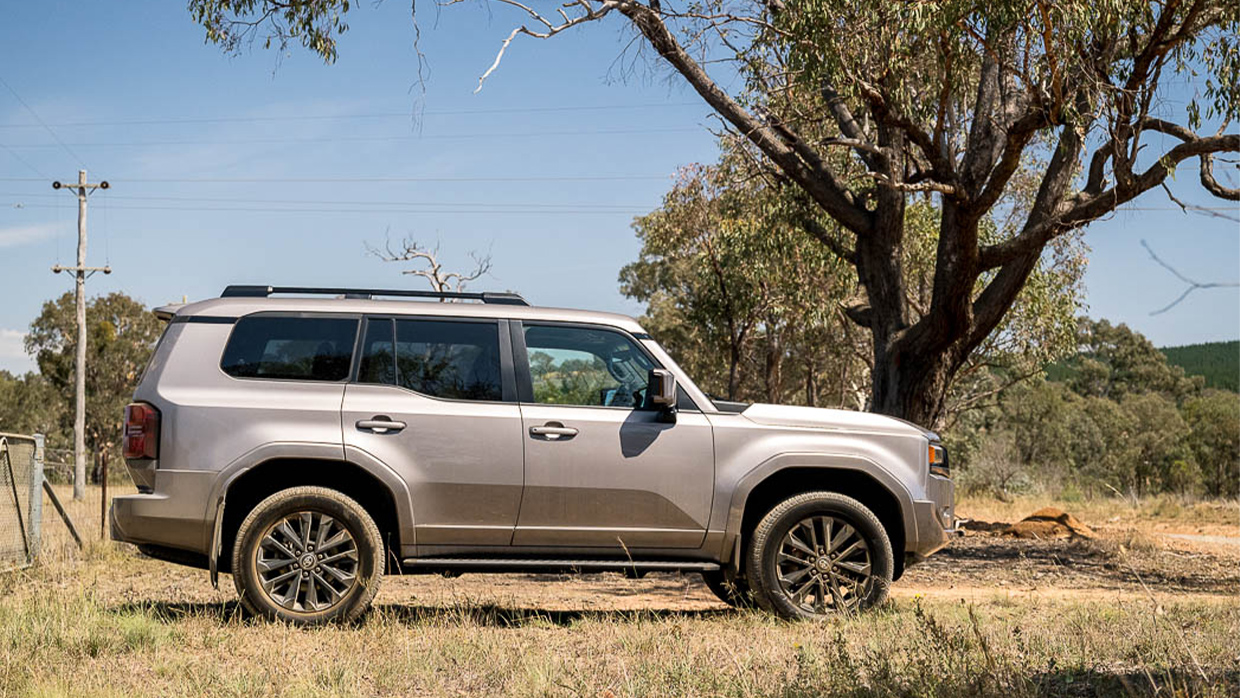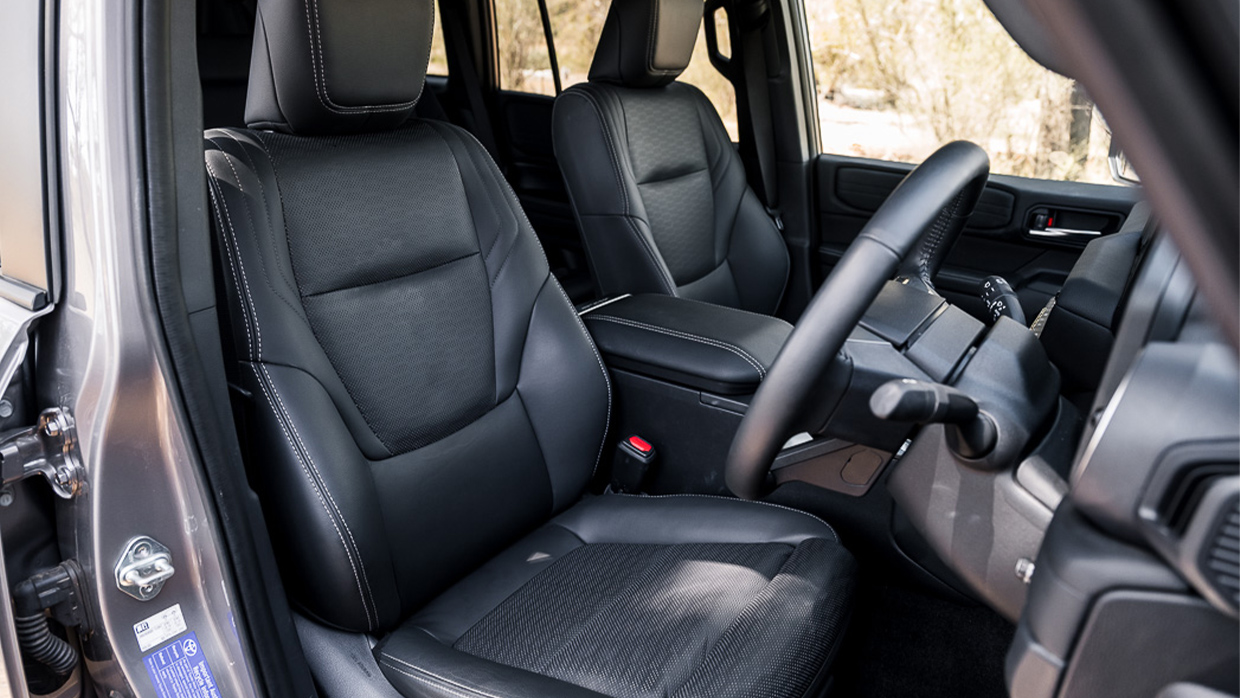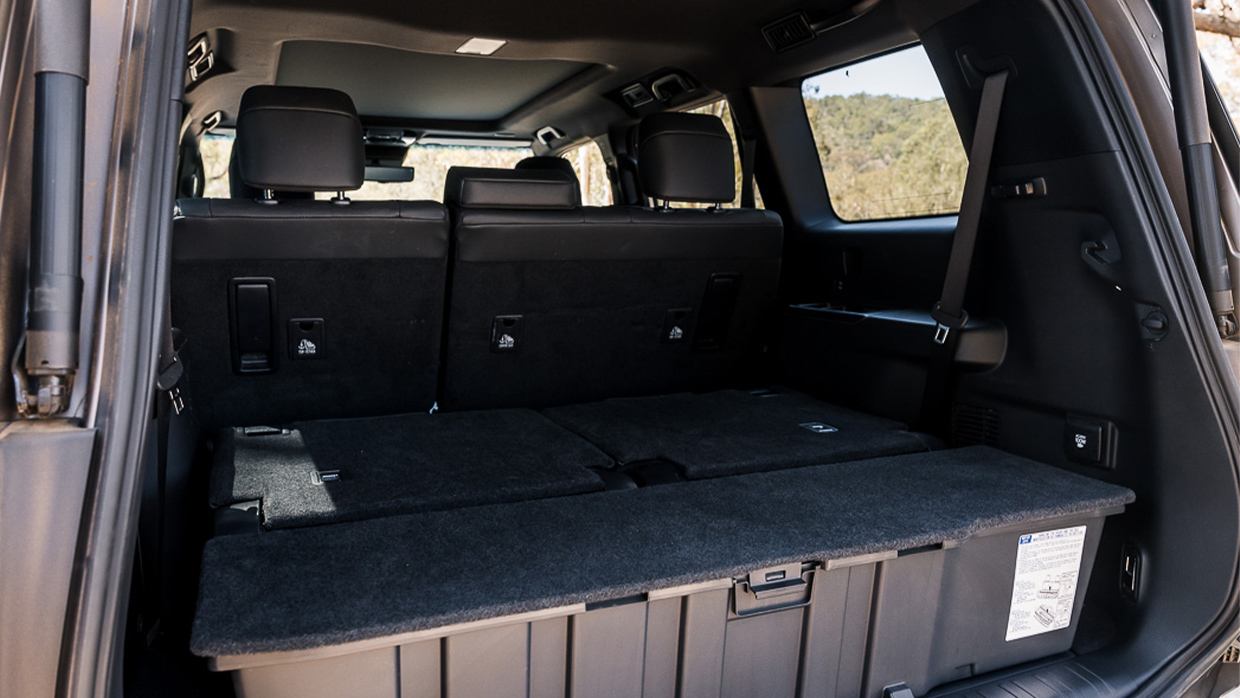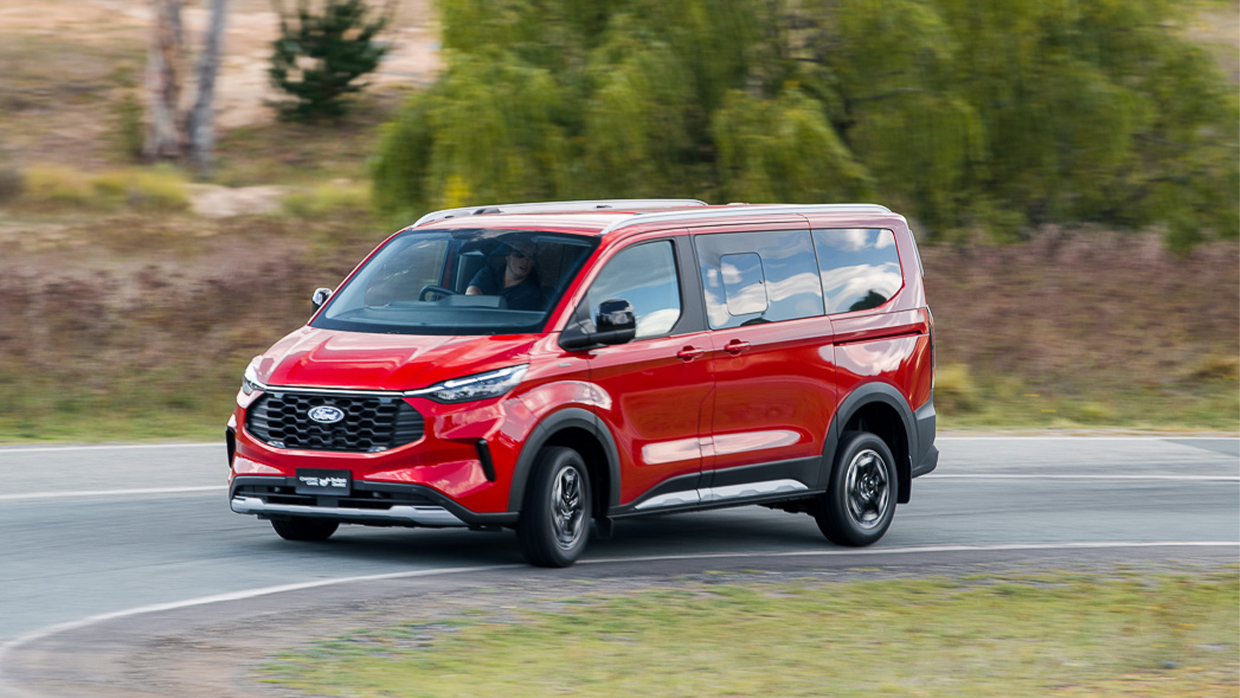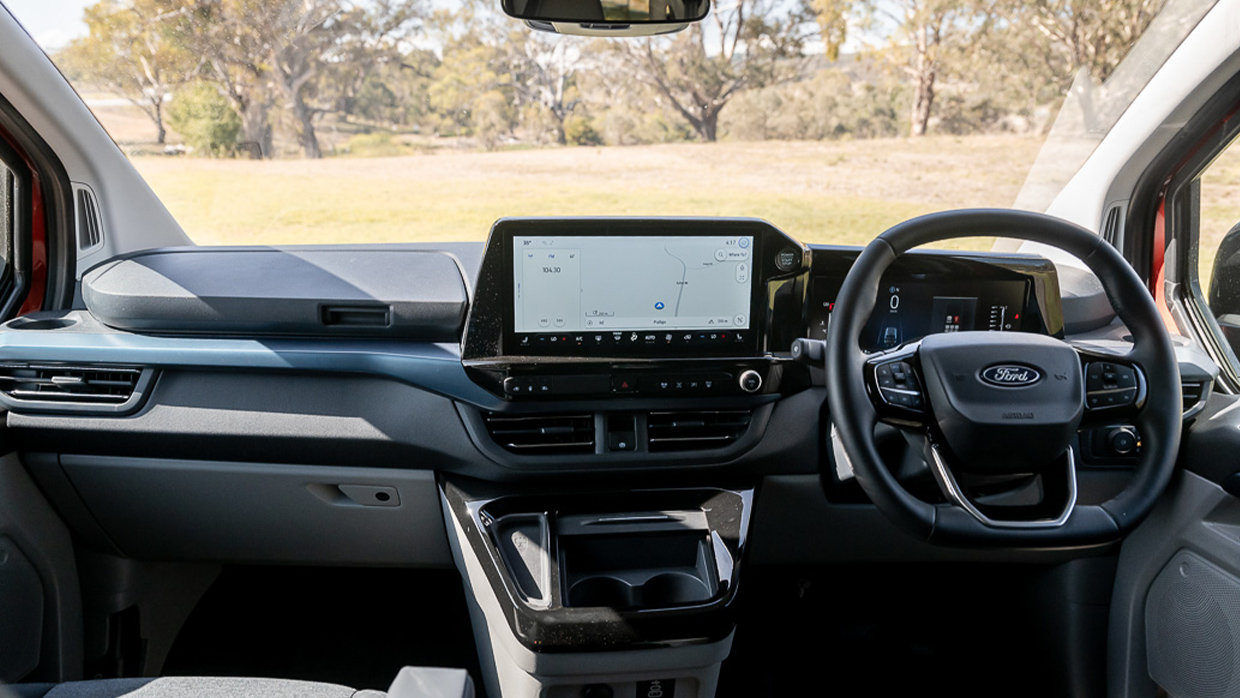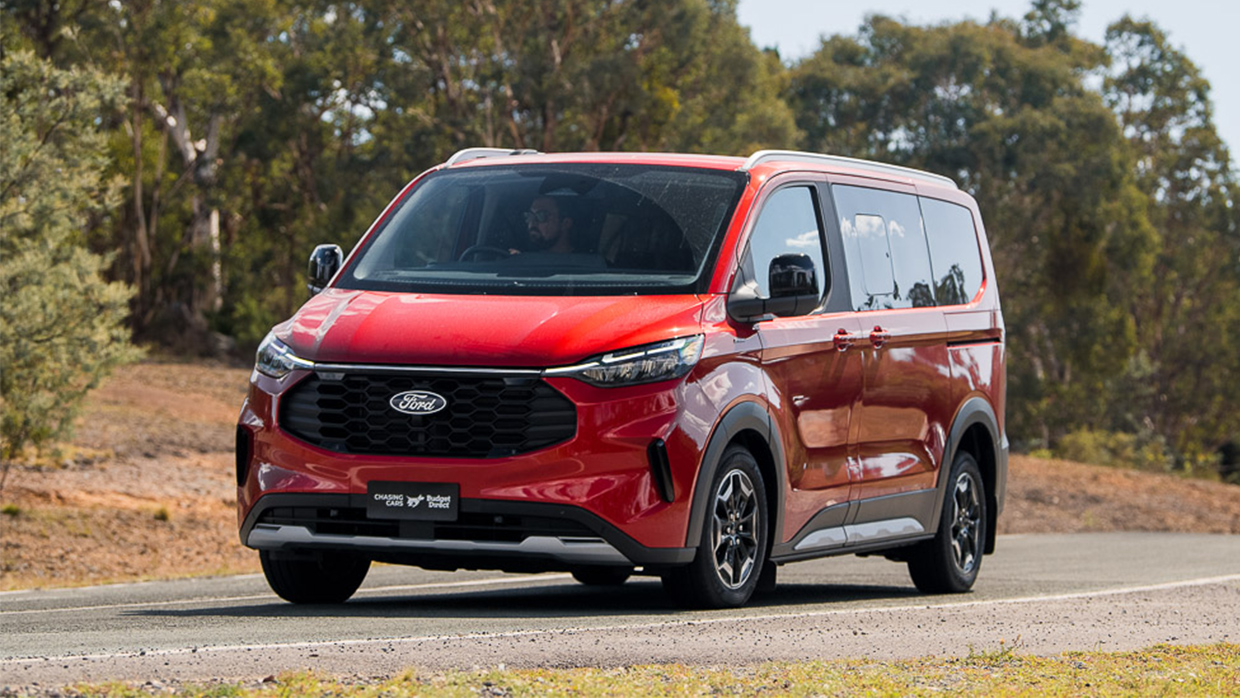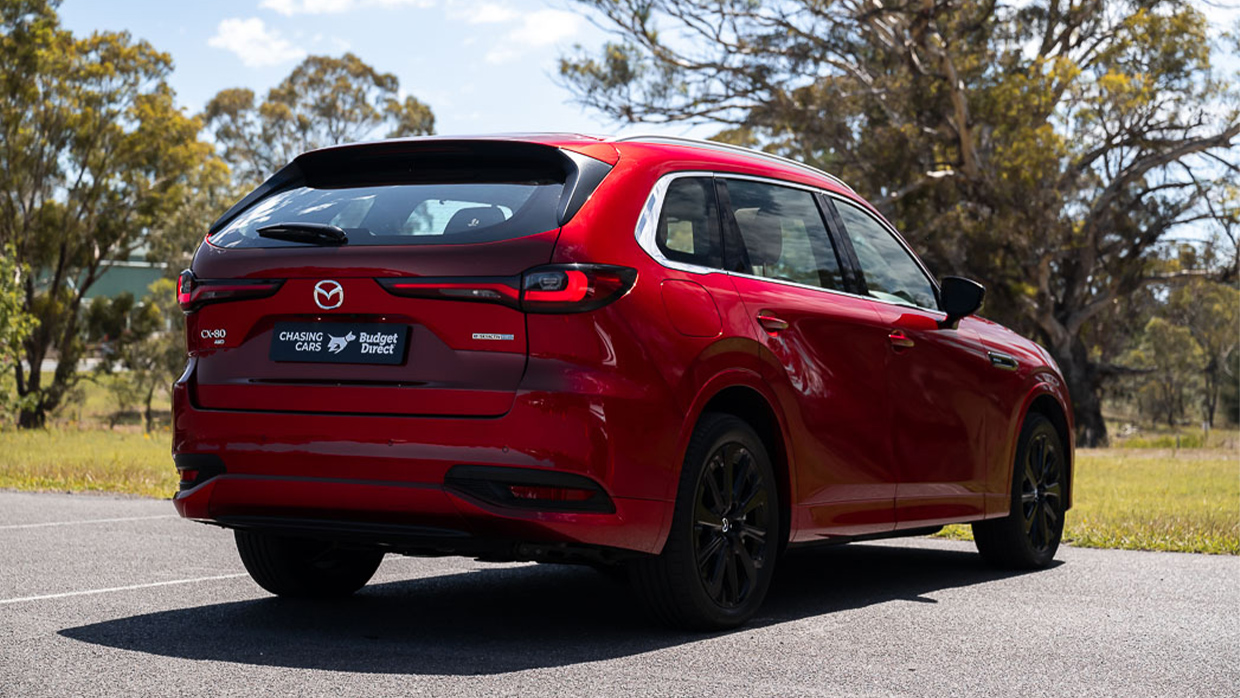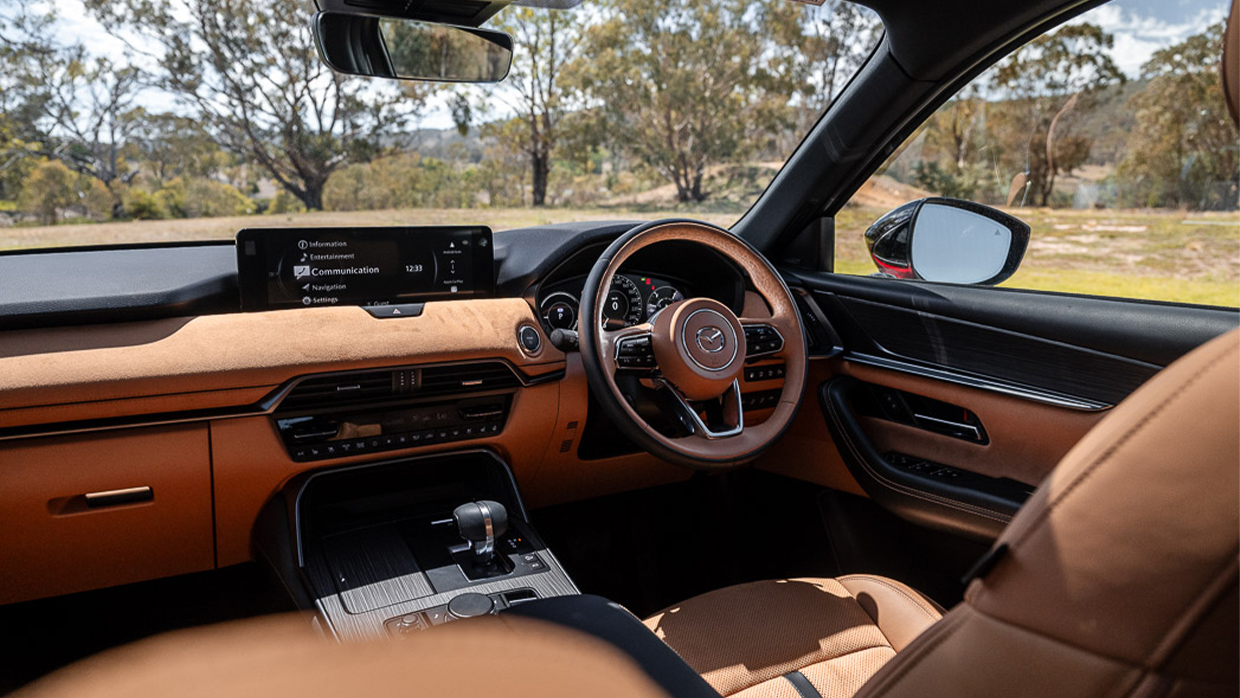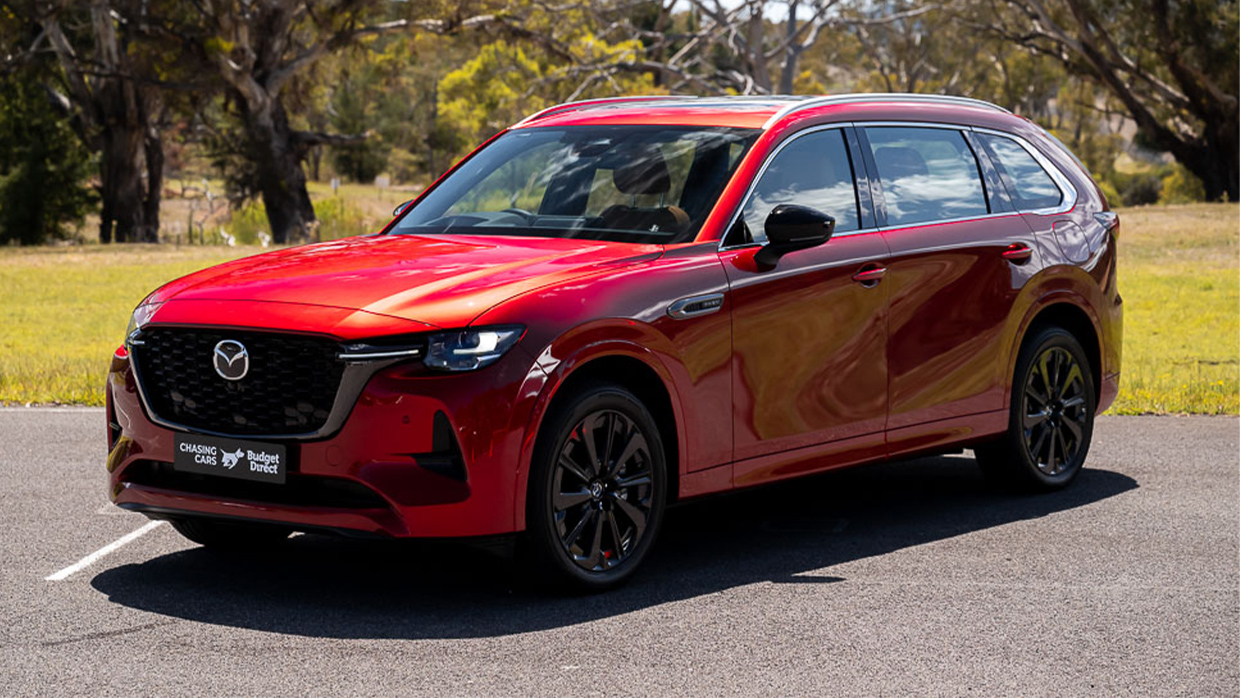-
Car Reviews
- All reviews
- Midsize SUVs
- Small cars
- Utes
- Small SUVs
- Large SUVs
- Large cars
- Sports SUVs
- Sports cars
- Vans
Latest reviews
- Car News
-
Car Comparisons
Latest comparisons
- Chasing Deals
This growing seven-seat segment aimed at families was a real smorgasbord of sizes, body styles and propulsion at our most recent Car of the Year event
For many Australian buyers, three rows of seats are non-negotiable. Large families depend on them, and even those with just one or two kiddies seek seven chairs to accommodate friends or grandparents.
The seven-seater segment is hugely significant. Last year we bought roughly 200,000 examples across medium, large and upper-large SUVs, while people movers (MPVs) are enjoying something of a renaissance, with a raft of new models.
Testing for Chasing Cars Car of the Year 2025 illustrated the variety available, and we hit all the main drivetrain groups: petrol, diesel, hybrid, plug-in hybrid and battery electric.
None of our six players came from the prestige crowd, but there was premium pricing on show from our electrified contenders, plus appreciated high specification for all. Some competitors with starting prices just north of $50k showed that there’s still relative affordability found in the segment.
In identifying our order and overall winner, we considered what buyers want and need from their seven-seaters in 2025.
Practicality is a must, but owners tend to want the complete package: style, drive quality, features, space, cheap running costs and – as they’re used by families – lots of safety.
Elite 2.5T ($62,500 before ORC) and Calligraphy Hybrid ($75,000 before ORC)
So it looks a bit funny. Some love it (like, really love it) and others find it a mystifying eyesore. But even those who consider the boxy retro-cool Hyundai Santa Fe’s styling unappealing will be won over by its beautifully presented cabin, spaciousness and drive experience.
Then there’s the hybrid’s economy. In this transitional time from pure combustion to EV, hybrids have proved to be Australia’s popular middle ground, and Hyundai’s system is the match of Toyota’s excellent long-serving hybrids.
Offering a seven-seat large SUV that can return 5.6L/100km – and we found this figure to be just about achievable – is a masterstroke in these challenging cost-of-living times.
The 172kW/264Nm (combined) from a 1.6-litre turbocharged four-cylinder petrol with small lithium-ion battery and electric motor may never be thrilling, but it’s always smooth, unfussed and totally fit for purpose for modern Aussie families.
The six-cylinder and diesel Santa Fes are no more, so hybridisation makes all the sense in the world.
Helping it triumph is that Hyundai is not reserving this more complex and desirable hybrid tech only for its flagship models. Instead, the entry-level Base front-wheel-drive with hybrid economy costs $55,500, while all-wheel-drive versions start from a decent $58,500.
Those not sold on hybrid tech can hop in 2.5-litre turbo-petrol versions sans any electrification, and enjoy improved performance from these 206kW/422Nm four-cylinders. You also get 2000kg towing, over the hybrid’s relatively feeble 1650kg.
These are relatively thirsty, at 9.3L/100km, but our judges liked having the option of this powertrain, especially for those who seek a bit more driving joy and better response, aided by a rapid eight-speed dual-clutch auto gearbox. Variety and choice are big ticks.
The hybrid will be the popular choice, and it’s the Santa Fe most deserving of the gong in this seven-seater contest. For the urban crawl and traffic, the fuel savings this Santa Fe offers by running on battery power is superb.
It’ll reach over 50km/h before the petrol engine chimes in, then self-charges the battery under braking. Not having the hassle of ever plugging the car in is exactly what Aussies desire, it seems.
It’s smooth, quiet, brilliantly insulated and transitions between electric and petrol with barely a whisper. Fuel bills in town will be cut in half next to the petrol-only version, and previous generation Santa Fes.
The ride quality feels impressively premium. Up there with prestige brands. As we’ve come to expect of modern Hyundais, the balance between ride comfort and dynamic abilities has been nailed.
It absorbs bumps with aplomb – even in the third row of seats things never get choppy – then sits flat in corners thanks to its well-tuned independent rear suspension.
But to win this contest requires more, and the new Santa Fe’s interior seals the deal. The old Santa Fe’s cabin was aged, austere and boring, but this new generation brings wow factor, even in entry-level models. A range of brighter and lighter colour options, with plenty of contrast, make it a vehicle you’re happy to spend lots of time in.
It’s seriously spacious, build quality feels excellent, and common sense aspects for the modern user such as numerous USB-C ports and a pair of wireless phone chargers were praised.
Great storage and retaining physical buttons for temperature control are all wins too. A panoramic curved display is standout, as is the functionality from the pair of 12.3-inch screens.
There’s no excuse for not building versatility into a three-row SUV’s cabin, and Hyundai has delivered. Middle row seats offer great head and leg room, they slide on runners and recline.
With them forward, third row seats are useable by adults, they recline, and there are USB-C ports, bottle holders and a domestic socket, showing the rearmost chairs need not be an afterthought. The boot with five seats in place is a solid 628L.
The judges were rightly blown away by the range topping six-seat Calligraphy grade. It may cost $75,000, but could be mistaken for something over $100k.
Nappa leather upholstery; power, massage, heated and ventilated seats; sunroof plus rear fixed glass roof; Bose audio and ambient lighting are utterly spoil-yourself. And the space afforded with only two heated centre row seats make it a brilliant choice if you can cope with just six chairs.
The final piece of the family puzzle is safety, and Hyundai’s loaded all its Santa Fes with the key driver aids and assists. Over-nannying – a regular criticism of modern Hyundais – was a rare black mark from our judges, but a shortcut button can turn off the fussy lane-keeping quite quickly.
You come for the fascinating styling, and you stay for the brilliant drive experience and premium-feeling spacious cabin. The new Santa Fe may have arrived with a far heftier price tag than its predecessor, but it never feels anything but excellent value. It’s an SUV any family would love to own, proving utterly and superbly suited to Australian life in 2025.
READ MORE: Hyundai Santa Fe
Earth AWD ($106,500 before ORC)
The benchmark large family electric SUV. And pioneering too, Kia being the first mainstream brand to offer a seven-seat EV as an alternative to Mercedes-Benz’s triple-row EQS and EQB electrics. And, whisper it, with a quality, finish and inclusions inside to rival the best from Germany.
All EV9s cost six figures to drive away, and our Earth AWD being judged is a hefty $106,500 before on-roads. But it’s worth it. Incredible visual presence, cavernous and clever interior and it absolutely overflows with technology.
It’s an EV that has unquestionably moved the game on in the large SUV space, while looking like it’s been lifted directly out of Blade Runner. And we like that.
Our judges praised the giant Kia’s polished drive, highlighting the merits of when a car company goes to the extra effort of tuning the suspension specifically for our market and preferences. It’s comfortable to ride in yet handles well, despite its mighty 2800kg mass.
With 283kW, 700Nm, all-wheel drive and range of 512km thanks to a giant 95kWh battery, the EV9 Earth’s numbers are standout. Being able to hit 100km/h in only six seconds gave our judges acceleration thrills too.
Also singled out for praise were the artificial leather upholstery, cameras everywhere, huge safety inclusions, brace of 12.3-inch screens and luxuries like heated and ventilated seats.
But clumsy haptic dash buttons and strict driver aids were rare markdowns. We found energy use to be a bit higher than quoted, but mega charge speed (we saw a peak of 215kW) slashes refuelling time.
A Car of the Year needs to be a real game-changer, and the EV9 succeeds. But its high price – justifiable though it is – and the too-strong challenge from Hyundai’s Santa Fe (available from almost half the price) kept the Kia EV off the top spot this year. But, damn, what a brilliant all-rounder EV this is.
READ MORE: Kia EV9
LWB Pro ($91,290 before ORC)
It’s of little wonder Volkswagen plundered its back catalogue to create its flagship people mover. The iconic split-screen Kombi lives on with the all-electric ID Buzz, and this MPV’s striking looks turned on the charm offensive with our judges. And won.
It was praised for its excellent cabin packaging and seating flexibility, plus the superb view out of the giant windscreen and windows.
Performance from the 210kW/560Nm rear motor and impressive refinement also showed the Buzz is up there with the best from VW. When the German giant gets the drive experience right, it has few rivals for handling competence and joy.
Cabin and seating space are mega, but for the money – over $90,000 before on-roads and options – seat materials and cabin plastics feel a bit cheap. Cost options soon push the bill over $100,000, reminding this Buzz isn’t exactly a car of the people.
But the biggest issue is the less than perfect ride. Steering is numb, the ride is abrupt on the Buzz’s big 21-inch wheels, and worst of all were our judges feeling queasy when riding in the back. The idea of five kids vomiting in your pricey new Kombi is a deal-breaker.
Solid EV credentials boost its case however. A large 79kWh battery delivers 452km range, and on test we found the claim to be wholly accurate. The importance of a reliable EV economy can’t be overlooked … you really don’t want a bus full of tired/hungry children waiting for you to find then use a public charger.
An easy MPV to love, but its hefty price and turning its rear occupants green kept this VW behind the best.
READ MORE: Volkswagen ID Buzz
Kakadu ($99,90 before ORC)
The hype monster. The first all-new Prado for 15 years has towering improvements over the old model, but key failings have held it back from achieving greatness. In time some elements will surely be rectified by Toyota, but for now, this highly capable seven-seater remains on the “room for improvement” list.
Our judges heaped praise on the Prado’s steering feel and response, on- and off-road refinement, glorious retro styling, safety, tech and 3500kg towing.
With our Kakadu range-topper there’s true luxury too, with some features besting its luxury (and pricier) Lexus GX twin.
The Prado’s cabin bones may be utilitarian, but four heated and ventilated leather-accented seats, panoramic moon roof, 12.3-inch digital instruments and refrigerated box are properly premium for (just) under $100k.
It’s a Swiss army knife of an SUV. It’ll cross deserts and climb mountains out of the box, then happily do the Monday school run with relative comfort for seven.
But our judges couldn’t overlook the lack of a new engine for this generational change Prado. The 150kW/500Nm turbo-diesel shared with the Hilux ute is a reasonable powertrain, but nothing more.
Its mild hybridness brings no meaningful economy gain, and for 2025 we feel a zestier and less thirsty petrol hybrid option (as seen in the US) would boost the Prado’s case.
A 110L fuel tank (down from 150L) is a regressive step, it needs AdBlue between services, and these are every six months so running costs are mighty – not what you want from a family SUV. There are also GVM and payload concerns for towers.
But a major misstep from Toyota is the new Prado’s disastrous boot space. This alone would have ruled it out of Car of the Year. Its 48v hybrid battery is beneath the boot floor, compromising the way the third row of seats fold, there are gaps for kit to fall into and a cheap-feeling plastic box tries to create a flat floor.
The boot’s simply not practical nor smart enough to win points as a useful seven seater, and our judges understood the buyers who cancelled their Prado orders due to this mystifying own goal. It tarnishes an otherwise superb and capable large SUV.
READ MORE: Toyota Land Cruiser Prado
Active ($65,990 before ORC)
For any new people mover entering the market, the shadow of the excellent and dominant Kia Carnival looms large. This new Tourneo – Ford’s first MPV here since 1990 – offers key points of difference over the Kia, but failed to wow our judges enough to challenge Hyundai’s Santa Fe.
Nor, we suspect, would it usurp the Carnival had it been allowed to enter this year.
Simply put, this Transit-based Tourneo looks, feels and drives like a van – albeit a very good one – when the Carnival’s an MPV disguised as an SUV but with mammoth space.
Our entry-level Tourneo Active is a budget-bruising $15,000 over a base Kia Carnival, so immediately it lost points for overall value. For $65,990 you’re buying cloth seats and lots of hard cabin plastics, while the same money has you in high-specification, leather-coated rivals.
But the Ford’s driving composure impressed our judges, despite its van-like ride-height and seating position. Meanwhile, its incredibly versatile eight-person seating arrangement and being able to remove all chairs for a true Transit-sized cargo space is a key win over a Carnival.
The Ford’s solid 854kg payload and 2500kg towing also holds two fingers up to Kia.
Judges loved the vast third row seating space, quality pair of dash screens and safety inclusions, but this new Ford has limitations.
Entering our market with just a diesel engine and nothing hybrid is a miss, and our testing (mainly in town) returned a chunky 9.8L/100km. Said diesel engine also feels underdone with only 125kW on tap.
For Transit van urban deliveries this may suffice, but you want more oomph on the family road trip with all seats occupied.
A likeable, hugely practical and versatile unit with decent good looks, but reality is the majority of families are better served by a Hyundai Santa Fe or Kia Carnival.
READ MORE: Ford Tourneo
Pure G40e ($55,200 before ORC), GT D50e ($71,200 before ORC) and Azami SP P50e PHEV ($92,769 before ORC)
Mazda’s long been a darling of seven-seat SUVs; the dearly departed CX-8 and CX-9 biggies finding favour with thousands of Aussie families. They were affordable, safe and drove well, and felt that bit classier than key rivals.
But Mazda’s new breed of SUVs – this CX-80 included – are confounding. In the push to go more premium, Mazda’s dropped the ball on drivetrain and ride quality. It saddens us because we know this is a brand that is no stranger to delivering refined and enjoyable vehicles.
This CX-80 large SUV was deemed a contender because it doesn’t suffer the restrictively pricey cost of entry as its CX-60, CX-70 and CX-90 stablemates. From $54,950 it’s in-line with key rivals like the Toyota Kluger, Kia Sorento and fellow finalist Hyundai Santa Fe.
Positively, middle row seats are vast and versatile, while the third row and boot are perfectly fit for purpose. But the ride is simply too firm and occasionally jittery, when such a car is crying out for pillowy smoothness. Jerky gremlins in the transmission also mark it down.
Having petrol, diesel and plug-in hybrid variants showed the torque-rich diesel to be the pick, but the significantly cheaper petrol entry-level and flagship PHEV suffered the most drivetrain stutters.
Hopping from the excellent Hyundai Santa Fe into the Mazda painfully highlighted the contrast in drivability and suppleness of ride – the Korean is miles ahead.
Interior quality and styling also feel quite behind our winning Santa Fe; the Mazda’s cabin only turning on the wow in the expensive Azami. And while its six-cylinder engines have muscle, their real-world economy doesn’t align with 2025’s expectations.
READ MORE: Mazda CX-80
Latest comparisons
About Chasing cars
Chasing Cars reviews are 100% independent.
Because we are powered by Budget Direct Insurance, we don’t receive advertising or sales revenue from car manufacturers.
We’re truly independent – giving you Australia’s best car reviews.
